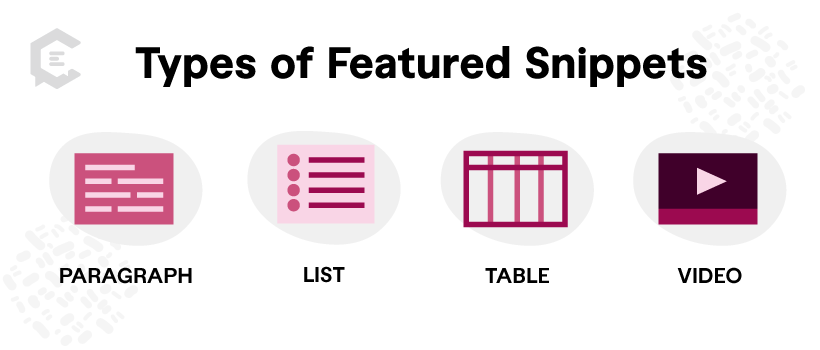What is a featured snippet?
A featured snippet, or “position zero,” is a concise excerpt of information displayed at the top of the search engine results page (SERP). It’s designed to give users quick and direct answers to their queries without requiring them to click a specific search result.
They’re prominently displayed above the organic search results and usually appear in a box format with the webpage’s title, URL, and a brief snippet of text. The featured snippet often includes a definition, a list, or an explanation of the searched query.
You’re likely to see featured snippet results when you search for:
- Definitions (e.g., What does voracious mean?)
- Dates (e.g., When is Mother’s Day?)
- How-tos (e.g., How to make oobleck)
- Names/people (e.g., Who was Ruth Bader Ginsburg?)
- Costs (e.g., Cost of living in Minneapolis)
- How many (e.g., How many people are in the United States?)
- Conversions (e.g., 12 tablespoons is how many cups?)
Creating well-structured, informative, and concise content that addresses common user queries is helpful. It increases the chances of Google selecting your content for a featured snippet. Appropriate formatting, like headings, lists, and tables, makes your content more snippet-friendly.
But, it’s important to note that Google determines which content appears as a featured snippet through its algorithm. So there’s no guaranteed method for achieving a featured snippet placement.
Why is a featured snippet important?
Featured snippets are an incredible opportunity to gain prominent visibility and reach a larger audience. Even if users don’t click on the snippet itself, the brand or website mentioned in it gains exposure.
Landing a spot as the featured snippet increases organic traffic and boosts your credibility. Not only are you on the front page of a Google Search, but you’re right up at the top and the first thing the user reads!
Types of Featured Snippets
Paragraph Snippets:
These snippets briefly describe or explain the query in paragraph form. They often appear in response to “how-to” questions, definitions, or general information queries.
List Snippets:
List snippets present information in a bullet-point or numbered list format. They typically show up for step-by-step instructions, rankings, or itemized details.
Table Snippets:
Table snippets organize information in a tabular format. They’re useful for presenting structured data, comparisons, or specifications.
Video Snippets:
Video snippets display a video thumbnail and a description. They occur when video content is relevant to the query.
Are featured snippets good or bad for SEO?
When Google first introduced featured snippets, most SEO experts were less than thrilled. They thought they’d lose clicks when Google scraped their content and put it on their results pages. They were concerned users wouldn’t need to click on their websites anymore to find the content!
And while in some cases, you’re losing clicks, in other cases, you’re gaining them.
Featured snippets generate from more than just the No. 1 result on the search results page. It largely depends on which result is structured best. For instance, a page might rank first because it has better backlinks than the other results.
However, if the third result shows matching high levels of expertise and trust and is also structured in a way that featured snippets love, it might be grabbed for the featured snippet, thus catapulting to the top spot.
There are many cases in which a user will still want to click on your result to learn more than what they can see in the snippet. If the user doesn’t need to click, they still see your result and your business or brand’s name and URL.
How to create featured snippet-worthy content
While we have little control over what Google selects as a featured snippet, there are ways of curating your content to increase the likelihood of getting picked.
Identify Common User Queries:
Research the most common questions or search queries related to your industry. Then, generate targeted content with answers specific to these FAQs.
Optimize Content for Snippet-Friendly Formatting:
Format your content in a snippet-friendly way. Use headings (H1, H2, etc.), bullet points, and numbered lists to present information in a structured format.
Focus on Long-Tail Keywords:
Long-tail keywords are more specific and often align with user queries. Research and target long-tail keywords with high search volume and a good chance of triggering a featured snippet.
Optimize Meta Tags and Descriptions:
Craft your meta tags, meta titles, and meta descriptions to succinctly summarize and entice users to click through your website for more information.
If you want to improve your chances of snagging a featured snippet but don’t know where to start, we’ve got you covered. ClearVoice can handle your content creation, from keyword research to the writing process. Talk to a content specialist today to start getting your website featured at the top of the page.





